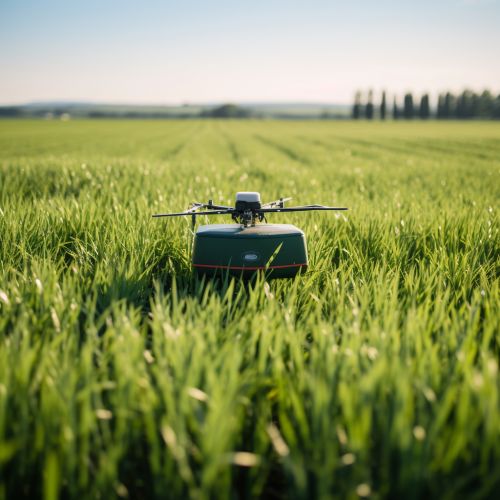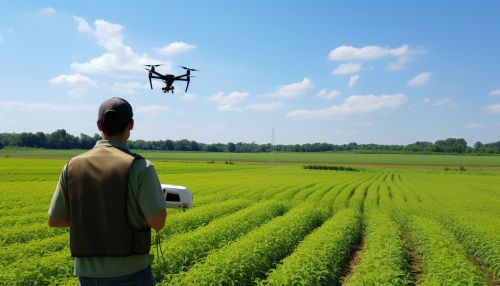Integrated Pest Management Strategies
Introduction
Integrated Pest Management (IPM) is a comprehensive, environmentally sound approach to controlling pests. The IPM approach involves a combination of common-sense practices and scientific research. Its goal is to manage pests -- such as insects, diseases, weeds, and animals -- in a way that minimizes risk to people and the environment. IPM can be used in both agricultural and non-agricultural settings, such as the home, garden, and workplace. IPM takes advantage of all appropriate pest management options, including, but not limited to, the judicious use of pesticides.


Principles of IPM
The principles of IPM are based on understanding the ecology of the pests, including the various interactions between pests, their hosts, and the environment. This information is used to develop control strategies that will keep pest populations at acceptable levels. The four key principles of IPM are:
- Pest Identification: Accurate pest identification is critical to a successful IPM program. Misidentification can lead to incorrect control methods that can be costly and damaging to the environment.
- Monitoring and Assessment: Regular monitoring and assessment of pest populations and damage is essential to determine if and when control measures are necessary.
- Prevention: The goal of IPM is to manage pests, not eliminate them. Prevention methods can include crop rotation, selecting pest-resistant varieties, and creating unfavorable conditions for pests.
- Control: When pest populations exceed acceptable levels, control measures are taken. These can include mechanical methods, biological controls, and chemical controls.
Pest Identification
The first step in an IPM program is to correctly identify the pest. This is important because different pests may require different control methods. For example, the control methods for a aphid infestation would be different from those for a Japanese beetle infestation.
Monitoring and Assessment
Regular monitoring and assessment of pest populations and damage is a critical component of IPM. This involves regular inspections or surveys of the crops, landscape, or structures to determine the types and numbers of pests present. Monitoring can also help identify any changes in pest behavior or population dynamics that might require changes in control strategies.
Prevention
Prevention is the most effective and environmentally friendly method of pest management. This can involve a variety of strategies, such as selecting pest-resistant varieties, rotating crops to disrupt pest life cycles, and maintaining healthy soil to promote plant health. Other prevention methods can include using physical barriers to keep pests out, and modifying the environment to make it less attractive to pests.
Control
When pest populations reach unacceptable levels, control measures are necessary. These can include mechanical methods, such as hand-picking pests or using traps, and biological controls, such as introducing natural predators or pathogens. Chemical controls, including pesticides, are used as a last resort and are applied in a way that minimizes harm to people and the environment.
Mechanical Control
Mechanical control methods physically remove or exclude pests. This can include hand-picking pests, using traps, or using physical barriers to keep pests out. For example, floating row covers can be used to protect crops from insect pests, and fences can be used to keep deer and other large animals out of gardens.
Biological Control
Biological control involves using the pests' natural enemies to control their populations. This can include predators, parasites, pathogens, and competitors. For example, ladybugs are natural predators of aphids and can be used to control aphid populations. Similarly, certain types of fungi and bacteria can be used to control insect pests.
Chemical Control
Chemical control involves the use of pesticides to control pests. In an IPM program, pesticides are used as a last resort and are applied in a way that minimizes harm to people and the environment. This can include using the least toxic pesticide that will do the job, applying pesticides only in affected areas, and applying pesticides at the right time to maximize their effectiveness.
Benefits of IPM
There are many benefits to using an IPM approach. These include:
- Reduced pesticide use: By using a combination of control methods, IPM can reduce the need for pesticides.
- Environmental sustainability: IPM is an environmentally friendly approach to pest management that takes into consideration the impact of pest control methods on the environment.
- Economic benefits: By preventing pest damage, IPM can save money in the long run.
- Health and safety: By reducing pesticide use, IPM can reduce the risk of pesticide exposure to people and pets.
Challenges and Limitations of IPM
While IPM has many benefits, there are also challenges and limitations to its implementation. These can include the need for extensive knowledge and training, the time and labor required for monitoring and assessment, and the potential for increased short-term costs. However, the long-term benefits of IPM, including reduced pesticide use and improved environmental sustainability, often outweigh these challenges.
